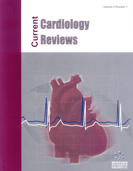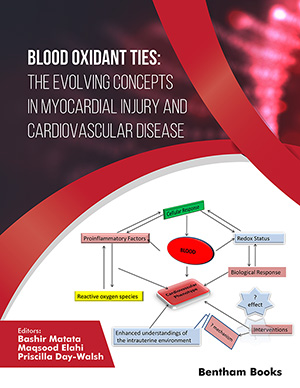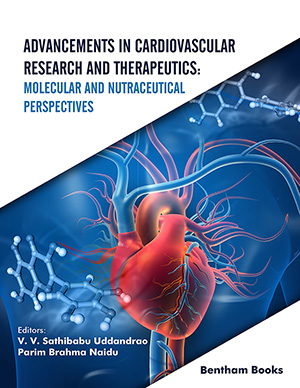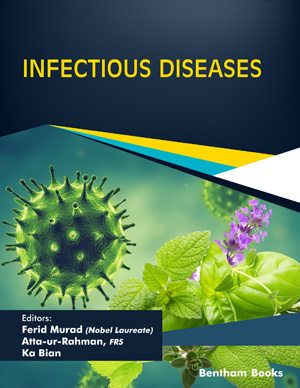Abstract
Background: COVID-19 is characterized by an acute inflammatory response with the formation of endothelial dysfunction and may affect arterial stiffness. Studies of cardio-ankle vascular index in COVID-19 patients with considered cardiovascular risk factors have not been conducted.
Objective: The purpose of our study was to assess the association between cardio-ankle vascular index and COVID-19 in hospitalized patients adjusted for known cardiovascular risk factors.
Methods: A cross-sectional study included 174 people hospitalized with a diagnosis of moderate COVID-19 and 94 people without COVID-19. Significant differences in the cardio-ankle vascular index values measured by VaSera VS - 1500N between the two groups were analyzed using parametric (Student's t-criterion) and nonparametric (Mann-Whitney) criteria. Independent association between COVID-19 and an increased cardio-ankle vascular index ≥ 9.0 adjusted for known cardiovascular risk factors was assessed by multivariate logistic regression.
Results: There were significantly higher values of the right cardio-ankle vascular index 8.10 [7.00;9.40] and the left cardio-ankle vascular index 8.10 [6.95;9.65] in patients undergoing inpatient treatment for COVID-19 than in the control group – 7.55 [6.60;8.60] and 7.60 [6.60;8.70], respectively. A multivariate logistic regression model adjusted for age, hypertension, plasma glucose level, glomerular filtration rate and diabetes mellitus showed a significant association between increased cardio-ankle vascular index and COVID-19 (OR 2.41 [CI 1.09;5.30]).
Conclusion: Hospitalized patients with COVID-19 had significantly higher cardio-ankle vascular index values compared to the control group. An association between an increased cardio-ankle vascular index and COVID-19 was revealed, independent of age, hypertension, plasma glucose level, glomerular filtration rate and diabetes mellitus.
Keywords: Arterial stiffness, cardiovascular index, COVID-19, cardiovascular risk factors, hypertension, diabetes mellitus.
[http://dx.doi.org/10.1111/odi.13447] [PMID: 32475006]
[http://dx.doi.org/10.1016/j.jiph.2020.03.019] [PMID: 32340833]
[http://dx.doi.org/10.1099/jgv.0.001843] [PMID: 37097842]
[http://dx.doi.org/10.1038/s41579-022-00807-9] [PMID: 36253478]
[http://dx.doi.org/10.2174/2666796701999201216101914] [PMID: 34580633]
[http://dx.doi.org/10.20996/1819-6446-2023-01-10]
[http://dx.doi.org/10.2174/2666796701999201026211142]
[http://dx.doi.org/10.1111/jch.14259] [PMID: 33951308]
[http://dx.doi.org/10.3389/fcvm.2021.750887] [PMID: 34722682]
[http://dx.doi.org/10.1016/j.cyto.2023.156287] [PMID: 37402337]
[http://dx.doi.org/10.2174/1570161120666220404200205] [PMID: 35379133]
[http://dx.doi.org/10.2174/2666796701999201218141035]
[http://dx.doi.org/10.2174/18735592MTEwFNzYF3] [PMID: 33081670]
[http://dx.doi.org/10.2147/VHRM.S355410] [PMID: 35283631]
[http://dx.doi.org/10.26442/00403660.2023.07.202292]
[http://dx.doi.org/10.1016/S0140-6736(20)30937-5] [PMID: 32325026]
[http://dx.doi.org/10.15829/1728-8800-2022-3431]
[http://dx.doi.org/10.1016/j.peptides.2020.170428]
[http://dx.doi.org/10.3390/ijms23031714] [PMID: 35163636]
[http://dx.doi.org/10.2174/1389450123666220926144432] [PMID: 36165519]
[http://dx.doi.org/10.3390/cells11121972] [PMID: 35741101]
[http://dx.doi.org/10.20996/1819-6446-2021-11-03]
[http://dx.doi.org/10.3389/fcvm.2020.588692] [PMID: 33195477]
[http://dx.doi.org/10.3390/biomedicines10092242] [PMID: 36140343]
[http://dx.doi.org/10.1161/hq0102.101818] [PMID: 11788467]
[http://dx.doi.org/10.1186/s12879-023-08650-w] [PMID: 37798630]
[http://dx.doi.org/10.3390/life12060781] [PMID: 35743812]
[http://dx.doi.org/10.1177/00033197221121007] [PMID: 36031949]
[http://dx.doi.org/10.1590/1806-9282.20210781] [PMID: 34909966]
[http://dx.doi.org/10.3390/jcm12175747] [PMID: 37685813]
[http://dx.doi.org/10.1111/eci.13859] [PMID: 35986716]
[http://dx.doi.org/10.1161/HYPERTENSIONAHA.120.16563] [PMID: 33377393]
[http://dx.doi.org/10.1007/s40520-021-01808-z] [PMID: 33683678]
[http://dx.doi.org/10.26355/eurrev_202206_29090] [PMID: 35776052]
[http://dx.doi.org/10.31083/j.rcm2301028] [PMID: 35092220]
[http://dx.doi.org/10.1007/s40292-022-00506-9] [PMID: 35184271]
[http://dx.doi.org/10.1016/j.amjms.2022.01.022] [PMID: 35151635]
[http://dx.doi.org/10.1007/s11886-023-01951-1] [PMID: 37676581]
[http://dx.doi.org/10.21776/ub.hsj.2023.004.02.2]
[http://dx.doi.org/10.3389/fcvm.2018.00064] [PMID: 29951487]
[http://dx.doi.org/10.3389/fcvm.2022.798934] [PMID: 35224042]
[http://dx.doi.org/10.1007/s00380-022-02180-2] [PMID: 36169708]
[http://dx.doi.org/10.3390/biomedicines11020492] [PMID: 36831027]
[http://dx.doi.org/10.1097/NNR.0000000000000565] [PMID: 34653099]
[http://dx.doi.org/10.1093/infdis/jiac136] [PMID: 35429399]
[http://dx.doi.org/10.1016/j.ihj.2023.06.002] [PMID: 37328135]
[http://dx.doi.org/10.1177/00033197211053903] [PMID: 34889662]
[http://dx.doi.org/10.1016/j.pcd.2022.05.009] [PMID: 35654679]
[http://dx.doi.org/10.3390/jcm12031159] [PMID: 36769807]
[http://dx.doi.org/10.3390/ijerph192013280] [PMID: 36293857]
[http://dx.doi.org/10.2174/1871523021666220328115818] [PMID: 35346011]
[http://dx.doi.org/10.1159/000445214] [PMID: 27493899]
[http://dx.doi.org/10.1161/HYP.0000000000000033] [PMID: 26160955]
[http://dx.doi.org/10.15829/1728-8800-2016-2-4-19]
[http://dx.doi.org/10.1093/ajh/hpad082] [PMID: 37696678]
[http://dx.doi.org/10.1097/HJH.0000000000001437] [PMID: 28594708]
[http://dx.doi.org/10.1186/1471-2261-11-51] [PMID: 21831311]
[http://dx.doi.org/10.1093/ajh/hpab178] [PMID: 34791038]
[http://dx.doi.org/10.2147/VHRM.S378292] [PMID: 36120719]
[http://dx.doi.org/10.1177/00033197231155963] [PMID: 36787785]
[http://dx.doi.org/10.20862/0042-4676-2020-101-2-72-89]
[http://dx.doi.org/10.1093/eurheartj/ehy339] [PMID: 30165516]
[http://dx.doi.org/10.1093/ajh/hpaa057] [PMID: 32251498]
[http://dx.doi.org/10.1038/s41574-020-00462-1] [PMID: 33479538]
[http://dx.doi.org/10.1007/s00109-021-02072-4] [PMID: 33824998]
[http://dx.doi.org/10.1161/HYPERTENSIONAHA.121.18776] [PMID: 35168368]
[http://dx.doi.org/10.1016/j.eprac.2021.03.004] [PMID: 33722731]
[http://dx.doi.org/10.1113/EP089481] [PMID: 33904234]
[http://dx.doi.org/10.1152/ajpheart.00897.2020] [PMID: 33306450]
[http://dx.doi.org/10.1161/HYPERTENSIONAHA.122.19958] [PMID: 36416143]
[http://dx.doi.org/10.1111/joim.13275] [PMID: 33651387]
[http://dx.doi.org/10.1038/s41598-021-99050-0] [PMID: 34642385]
[http://dx.doi.org/10.1016/j.diabres.2007.12.016] [PMID: 18242761]
[http://dx.doi.org/10.5551/jat.32797] [PMID: 26607350]
[http://dx.doi.org/10.1007/s00392-022-02092-1] [PMID: 36068365]
[http://dx.doi.org/10.1152/japplphysiol.00793.2021] [PMID: 35439042]
[http://dx.doi.org/10.1161/CIRCRESAHA.121.320460] [PMID: 35345906]





















